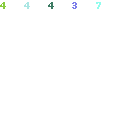
This image, Kopennick to Berlin, is of the hand of a grown person (possibly a woman) holding the photo of a little girl. The hand is next to a window by the train tracks, which seem to be tilted on a diagonal due to the angle of the camera when the photo was taken. This creates a solid sense of line and direction. The photograph is in black and white and employs a shallow depth of field and strong contrast between other trains, the tracks, the shadows and highlights on the hand, and the sky. The artist also makes use of strong repetition in the tracks and the reflection of the hand in the window.
The artist, a Romanian Jew, fled her homeland with her family at the end of the Second World War. They immigrated to the United States when Sylvia was only ten years old. Between 1990 and 2000, Sylvia created a body of work titled Return where she chronicled her journey across her homeland as a grown woman. This image, Kopennick to Berlin, is numbered 6 out of 28 in this series.
I think that this image of a hand holding a photo of a young girl on the train perfectly captures the struggle of a grown woman attempting to find her roots amidst memories of terror in a now foreign land. The strong diagonals of the train tracks and the hand visually represent tension and even painful memories. The lack of color and the use of strong contrast visually build the image and give it a solid impact and focus the viewer on the subject matter, the hand and photo. Also forcing the viewer to confront the hand and photo is the shallow depth of field. This brings the viewer directly to the little girl. The juxtaposition of the young girl and the hand of an older woman gives rise to questions regarding the relationship between the two. Are we, the viewers, privy to a rare moment of memory? Are we seeing ghosts of memories half forgotten by the artist herself? Of course, repetition plays into that almost out of body experience as well. The repeating tracks in the background coupled with that strong contrast allow us to see the repetition of the hand in its reflection in the window. Knowing the artist’s history, it is almost like seeing the ghost of the little girl that used to be, before the horrors of war were thrust into her reality.
No comments:
Post a Comment